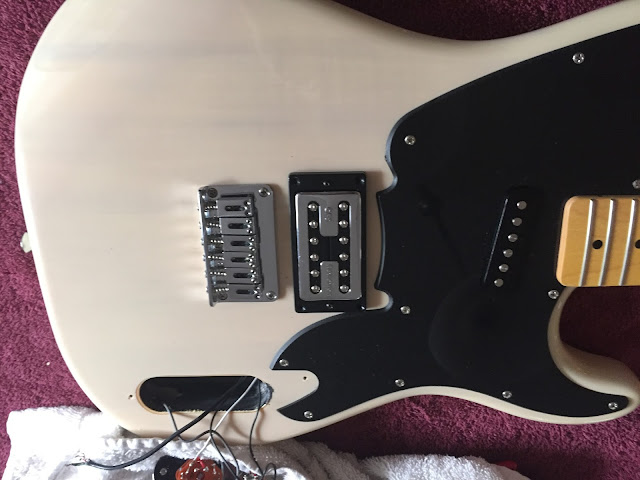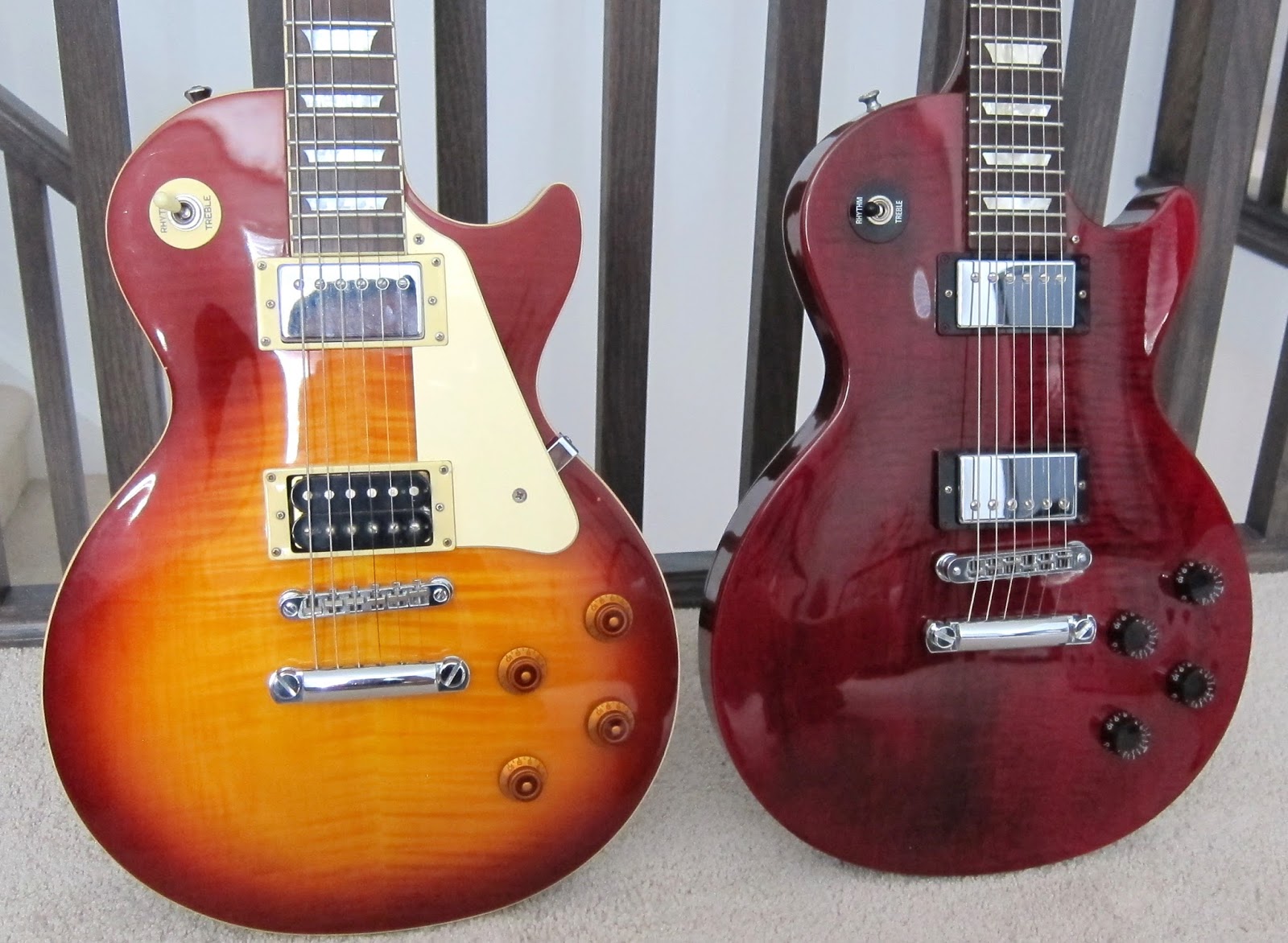Squier 51 Modification: GFS Nashville Bridge Pickup
Time for Modifications?
Despite not being convinced that the Squier 51 is a keeper, the charm and general good looks of the thing, combined with the happy accident of a pair of GFS Nashville pickups being available locally for $20, meant I was was committed to modifying it. The presence of the chrome control plate and bridge made the all black pickups an odd, if financially understandable choice. How much better though, would this look with a chrome covered humbucker in the bridge and a lipstick single in the neck?A couple of things were standing in the way though. First, I was without a workspace, having sacrificed it to the needs of a certain 4 year old and her lego. Second, while I wanted to make the mods, I couldn't be bothered. Not sure why, but there it is.
This weekend though, both kids sleeping with nothing to do meant there was a window open, and I was going to take it.
There are a couple of things worth noting before I get into how I'm a moron.
- The cavities on this guitar are clean. Not much in the way of spotty workmanship.
- The Stratocaster really is a brilliant design. Disconnect the pickguard from the output jack (hot and ground) and you are left with a much more manageable canvas for soldering.
- If you can't separate the guitar from the wiring, PROTECT THE GUITAR. Covering it with towels means no scratches or hot solder mucking up an otherwise good looking finish. I learned this one the hard way.
Moron 101
Having wired GFS pickups before, I was pretty sure I could get this done in a relatively short amount of time. I recalled being impressed with myself on the Blacktop Stratocaster rewiring, so this one should be a breeze. I would open up the Squier, make notes regarding wiring location, be off to the races. The patient would only be on the table for 10 minutes, tops. |
| Figure 1 |
The trouble was that as soon as I turned my attention to the GFS pickup, I realized I had made a critical mistake. The Squier pickup had 3 wires - on to the switch, one to ground, and one to a pole piece on the push-pull pot.
 |
| Figure 2 |
This seemed wrong to me, but I couldn't bother to figure out why.
Instead of sitting back and thinking about the problem, I started to make some pretty wild assumptions about where what wire should go where. I remembered that every pickups has a hot and a ground, but wasn't quite sure what to do with the rest. I assumed that trial and error would get me to where I wanted to go.
Wrong.
 |
| It Looks. It does not Sound. |
Taking a Step Back
After about 20 minutes of trial and error, I was frustrated. I checked online for wiring diagrams specific to the Squier 51 and to the GFS, and was still left scratching my head.
I wasn't getting anywhere, and was feeling pretty defeated. I'm not really this stupid am I? I wired two humbuckers to a super-switch and was able to split both in positions 2 and 4. This SHOULD be easy.
I wasn't getting anywhere, and was feeling pretty defeated. I'm not really this stupid am I? I wired two humbuckers to a super-switch and was able to split both in positions 2 and 4. This SHOULD be easy.
Other Pickup Guy to the Rescue
After cleaning up the mess I had made and taking a break, I cracked open the laptop and went over to Seymour Duncan to look at some wiring diagrams. Despite Seymour's new diagram selector system being absolutely terrible, it caused me to look a a number of different wiring diagrams and think about what I was doing. |
| Clean workmanship. No Sounds. |
The diagram that saved me was a Stratocaster wiring diagram that had blade humbuckers in the neck and bridge, wired to a push pull on the volume. With color coding being the same on GFS and Seymour Duncans, I had the epiphany I needed to.
Red and White together for the split. No contact is humbucker. Grounded (shorted) is single.
 |
| Shielded cavity. Also no Sounds. |
That last one got me. Unshielded and green to ground, not just green. Ignore the unshielded at your own peril, dummy.
Does NOT Go to 11
No, it isn't a Nigel Tufnel thing.
 |
| Goes to 11? No, no it doesn't... Sounds. |
The Verdict
 |
| Looks about right. Also Sounds. |
I'll turn my attention to the neck pickup next, probably a lipstick type pickup to maintain the chrome theme.
 |
| Not Done Yet |
If not, it'll look great on my wall, in addition to sounding great now too.







Comments
Post a Comment